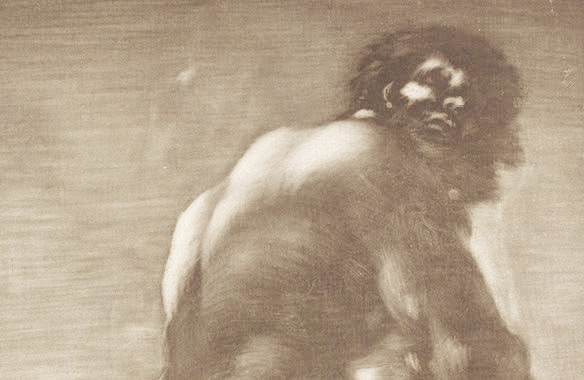메트뮤지엄 고야(F. Goya) 판화 & 드로잉전(2/12- )
Met Exhibition to Explore Francisco Goya's Prolific Activity as a Draftsman and Printmaker through Approximately 100 Works from the Late 18th and Early 19th Centuries

Regarded as one of the most remarkable artists of the late 18th and early 19th centuries, Francisco Goya (1746–1828) is renowned for his prolific activity as a draftsman and printmaker, producing about 900 drawings and 300 prints during his long career. Through his graphic work, he expressed his political liberalism, criticism of superstition, and distaste for intellectual oppression in unique and compelling ways. Opening February 12, Goya's Graphic Imagination will explore how the artist's drawings and prints communicated his complex ideas and responded to the turbulent social and political changes occurring in the world around him. The exhibition will feature approximately 100 works, mainly from The Met collection—which houses one of the most outstanding groupings of Goya's drawings and prints outside Spain—with other works coming from New York, Boston, and Madrid's Museo Nacional del Prado and the Biblioteca Nacional.
The exhibition is made possible by the Placido Arango Fund and Fundación María Cristina Masaveu Peterson.
"Esteemed as one of the most significant European artists from any period, Goya was a tireless observer of humanity, a quality that is especially clear in his works on paper," said Max Hollein, the Marina Kellen French Director of The Met. "This exhibition is an opportunity to further understand the critical role of drawings and prints as an outlet for the artist's fertile imagination, allowing him to explore subjects that preoccupied him throughout his long life. As a social critic and witness to great turbulence, Goya created art that captured the many aspects of what it means to be human amid challenging times. In today's complex and uncertain world, Goya's work resonates powerfully."
Exhibition Overview
Goya's evolution and his different phases as a graphic artist will be illuminated through a broadly chronological presentation of approximately 100 works across three galleries. Spanning six decades, the works reflect the transformation and turmoil of the Enlightenment, the Inquisition, and Spain's years of constitutional government. They will range from Goya's early etchings after Velázquez through print series such as the Caprichos and The Disasters of War to his late lithographs, The Bulls of Bordeaux, and include albums of drawings that reveal the artist's nightmares, dreams, and visions.
Drawing was integral to Goya's practice, both as an independent activity and for its value in the preparation of works in other media. After an illness in the early 1790s that left him deaf, Goya began creating sketchbooks, or "journal albums," in which he recorded personal thoughts and concerns that were often expressed through evocative and complex imagery. Goya regarded these sketchbooks as a repository to which he could refer over time. Around a third of his surviving drawings come from his eight sketchbooks that are all now disbanded.
The exhibition will include many standout drawings. The small Self-Portrait (ca. 1796) captures both Goya's appearance and his astounding psychological intensity. For wagging his tongue in a different way (ca. 1810–11) speaks to his empathy for the accused in trials and punishments carried out by the Holy Office of the Inquisition. The cruelty depicted in A Man Breaking Up a Fight (ca. 1812–20) testifies to Goya's continued interest in violence in the aftermath of the Peninsular War, and You'll see later (ca. 1816–20) is one of many works in which drinking is the focus, appearing as a lubricant for social exchange, a metaphor for losing control, and a prelude to violence. Goya's high regard for drawings as finished artworks is especially evident in the carefully orchestrated composition God save us from such a bitter fate (ca. 1816–20), showing a dagger-wielding man leading a woman and her child to an unknown fate.
Prints had different roles within Goya's work. They provided him another platform from which he could develop new techniques that facilitated the presentation of compelling subjects. He produced long series that explored over-arching subjects—such as human folly, superstition, relations between the sexes, and war—as well as independent sheets. Prints reveal his nuanced understanding of their varied purpose. The Caprichos (1799) was intended for wide distribution, whereas The Disasters of War (1810–15) was never published in his lifetime. A number of independent prints produced in very few impressions were not meant for distribution beyond his circle of close friends. At a late age, Goya took up lithography. After his first modest attempts, he mastered the technique and produced the Bulls of Bordeaux (1825), regarded as among the most remarkable examples of the medium ever produced.
Credits, Catalogue, and Related Content
Goya's Graphic Imagination is organized by Mark McDonald, Curator in the Department of Drawings and Prints.
A richly illustrated catalogue will accompany the exhibition. Published by The Metropolitan Museum of Art and distributed by Yale University Press, it will be available to purchase from The Met Store ($50, hardcover).
The catalogue is made possible by the Diane W. and James E. Burke Fund. Additional support is provided by Fundación María Cristina Masaveu Peterson and the Tavolozza Foundation.
The Museum will offer virtual programs in conjunction with the exhibition. A free, three-day virtual workshop, titled "The Art of Social and Political Movements," will invite middle and high school students to create drawings inspired by Goya's artworks and themes (February 16–18, 1–3 p.m. daily; Free with advance registration). Adult and university groups can purchase an online tour led by a Museum guide, available in English and Spanish (Reservations available Monday through Friday, 10 a.m. to 3 p.m., with limited appointments available on weekends; Contact mettours@metmuseum.org at least two weeks in advance to request an appointment.)
*아티스트와 뮤즈<19> 프란시스코 고야와 미스테리 뮤즈 '마야(Maja)'
http://www.nyculturebeat.com/index.php?document_srl=3963542&mid=Art2




 조안 미첼(Joan Mitchell) 회고전@SFMOMA & 볼티모어 뮤지엄
조안 미첼(Joan Mitchell) 회고전@SFMOMA & 볼티모어 뮤지엄

